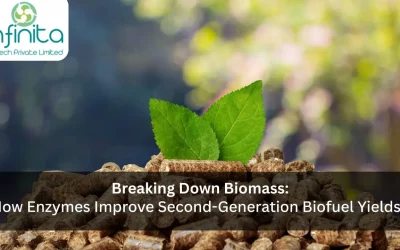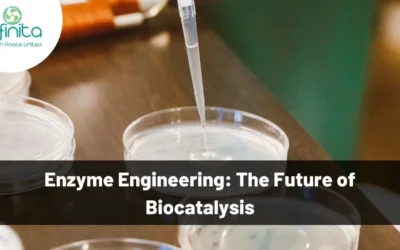Biotechnology could be followed back to a thousand years prior, when human civilisation began to utilise yeasts to make alcohol. This might have been the first dawn of biotechnology in food creation. Alongside the improvement of natural and social sciences these days, biotechnology conveys progressively vivid implications. In the modern world, biotechnology regularly alludes to the way toward making or altering items utilizing living systems or living beings. Other than the customary fermentation, biotechnological instruments have extended to apply further developed sciences, such as genetic engineering, applied immunology, and medicinal therapies and diagnostics. Among these, an assortment of chemicals is crucial—they may show up as mallets and chisels to help achieve molecular biology experiments, or they may go about as proficient smaller scale reactors in mechanical creation. They exist all over the place and take after a wide range of capacities in living cells or in harsh conditions bearing no life. In recent times, we have seen these capacities being exploited in incredible details for better uses in biotechnology.
Enzymes can be defined as biological catalysts or assistants. They comprise different sorts of proteins that work to either dispatch or speed up the chemical reaction needed for a particular activity or nutrient. Enzymes work in a mild domain like the bodily condition of a living being, and they bolster life by synthesising and degrading materials that comprise the building blocks of the living being and by making energy. They work as profoundly selective catalysts so that they selectivity catalyse explicit reactions (reaction specificity) and specific materials (substrate specificity). They can likewise be extricated from cells and afterwards used to catalyse a wide scope of monetarily significant procedures. For instance, they have significant jobs in the creation of sweetening agentS and the alteration of anti-infection agents, they are utilised in washing powders and different cleaning items, and they assume a key job in scientific gadgets and assays that have clinical, forensic and ecological applications. Technology for using enzymes for the improvement of life is a key element of biotechnology.
Biotechnology is characterised as the exploitation of natural procedures for industrial and varied purposes, and can be comprehensively characterized as “utilising life forms or their items for business purposes.” Particularly the genetic manipulation of microbes for the creation of anti-infection agents, hormones, and so on. It incorporates a wide scope of ventures, for example:
- Pharmaceuticals Industries
- Bio-fuels Industries
- Paper and Pulp Industries
- Food and Brewing Industries
- Agricultural Industries
Application Of Enzymes In Cell Biology:
Enzymes are usually utilised in cell lysis. Mechanical cell interruption techniques do not separate the release of the ideal item from among a large group of other debasing particles and cell garbage, and they may likewise harm the protein product. Conversely, the utilisation of a lytic enzyme system, which can give biological specificity to the procedure of cell lysis and item discharge, shows an intriguing potential for controlled lysis. Cell wall lytic enzymes are important instruments for the biotechnologist, with numerous applications in medication, the food business, and horticulture, and for recouping of intracellular items from yeast or microorganisms. The decent variety of potential applications has led to the improvement of lytic compound systems with specific attributes, reasonable for fulfilling the necessities of every specific application.
Applications Of Enzymes In Molecular Biology:
Nucleic acids utilised for sub-atomic cloning can be of natural or engineered origin, and their length ranges from a couple to a few thousand nucleotides. Nucleic acids can be broadly controlled, so as to procure specific attributes and properties. Such controls incorporate propagation, ligation, absorption, or expansion of modifying groups, viz. phosphate or methyl groups. These alterations are catalyzed by polymerases, ligases, nucleases, phosphatases, and methylases, respectively. Following are the various applications of enzymes in biotechnology:
There Are Various Applications Of The Enzymes In Biotechnology:
1. Novel Fibres:
Engineered strands produced using renewable sources of biomass are environmentally sustainable and are getting progressively monetarily viable. Biodegradable engineered polymers incorporate novel strands, such as polyglycolic acid and polylactic acid, which are produced using natural starting materials. Not every novel fibre is manufactured; they may be naturally derived. Some general organic filaments originate from essential materials found in nature, including:
- Chitin: A kind of sugar polymer found in shellfish
- Collagen: A kind of protein found in animal connective tissue
- Alginate: A kind of sugar polymer found in specific microbes
A perfect example of a manufactured biomass fibre is Polylactic Acid (PLA), which is formed by fermenting cornstarch or glucose into carboxylic acid and afterwards artificially changing it into a polymer fibre. With properties like other engineered filaments, PLA based materials are strong with a smooth feel and might be mixed with fleece or cotton.
2. Breakdown Of Hydrogen Peroxide:
At the point when cotton is bleached, a chemical called hydrogen peroxide, which can react with different colours, stays on the fabric. Catalase enzymes explicitly disintegrate hydrogen peroxide and might be utilised to expel this reactive chemical before further colouring.
- Biostoning and Biopolishing:
Rather than utilising rough devices like pumice stones to make a stonewashed effect or to evacuate surface fluff, cellulase enzymes might be used to adequately stonewash and clean textures without abrasively harming the fibres.
3. Detergents:
Enzymes permit detergents to adequately clean garments and expel stains. They can evacuate certain stains, for example, those made by grass and sweat, more adequately than enzymes free cleansers. Without enzymes, a great deal of energy would be needs to make the high temperatures and vigorous shaking expected to clean garments successfully. Enzymes utilised in clothing cleansers must be reasonable, stable, and safe to utilise. At present, just protease and amylase catalysts are fused into cleansers. Lipase enzymes separate too easily in the washing machine to be exceptionally valuable in cleansers. In any case, their dependability is being considered and further created through strategies, for example, genetic screening and modification.
4. Polylactic Acid (PLA):
PLA has likely applications in a few territories, such as:
- Textiles: Garments, fashions, upholstery
- Horticulture: Plant mats, tree nets, soil disintegration control items
- Sanitation: Household wipes, diaper items
- Medication: Expendable pieces of clothing, clinical materials
PLA limits natural waste, as it might be completely biodegraded by microorganisms under suitable conditions into carbon dioxide and water. This is unlike the nonrenewable oil assets used to make conventional engineered fibres, the supply of sustainable corn biomass expected to make PLA is relied upon to outperform demand in the foreseeable future.
5. Desizing Of Cotton:
Untreated cotton fibres can break easily when being woven into textures. To forestall this breakage, they are covered with a jelly like substance through a procedure called sizing. After the fibres have been woven into the fabric, the agents expected to additionally complete the material cannot adhere to the jelly covered textures. Hence, the protective sizing agents must be expelled by a procedure called de-measuring. Amylase enzymes are generally utilised in de-sizing, as they do not debilitate or influence cotton filaments, nor do they hurt the environment.
From the entirety of the above portrayal of pharmaceuticals enterprises, Bio-fuels ventures, paper and mash businesses and brewing enterprises it has been presumed that catalysts are significant in biotechnology. These both are significant for the welfare of humankind.







